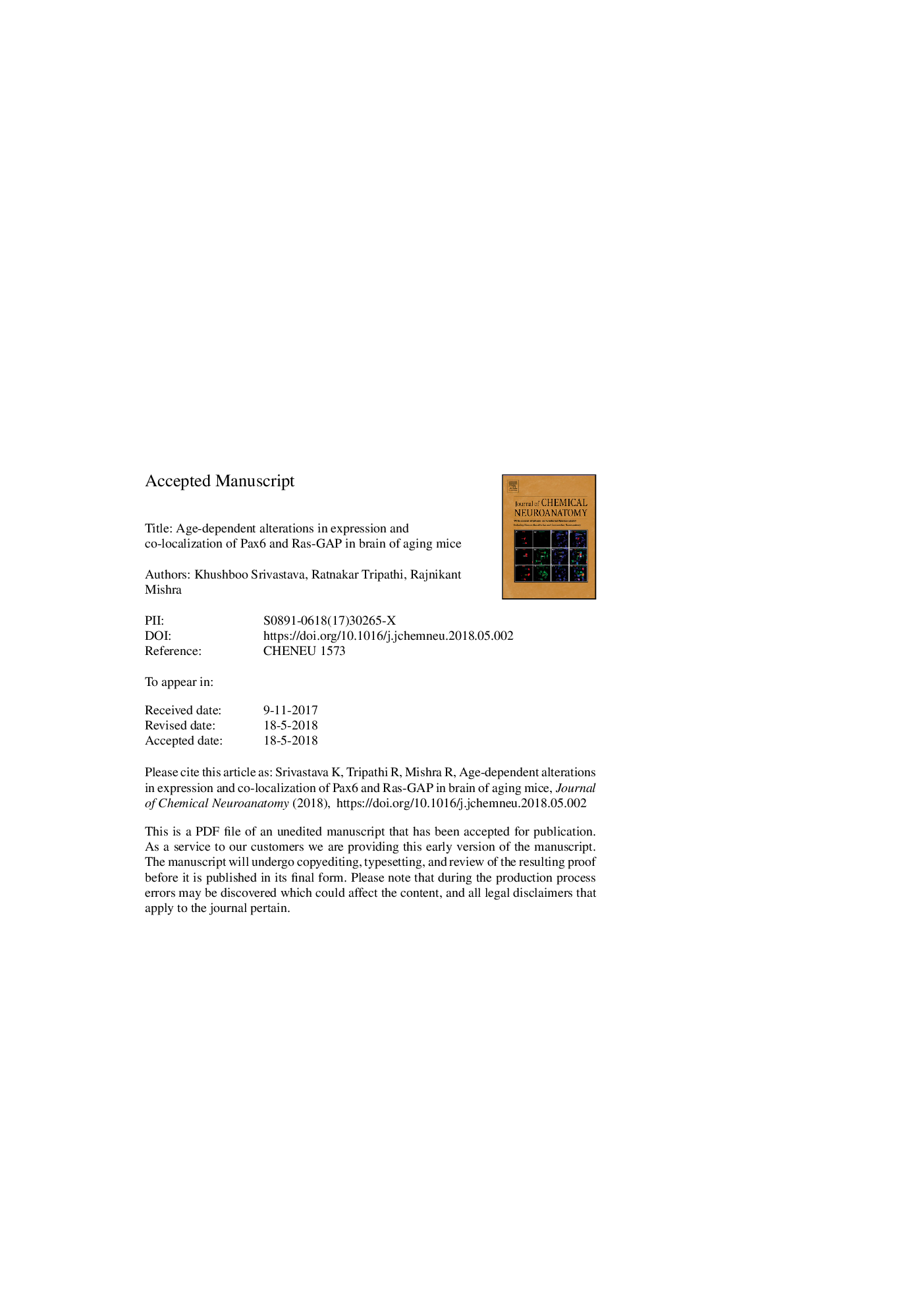| Article ID | Journal | Published Year | Pages | File Type |
|---|---|---|---|---|
| 8336097 | Journal of Chemical Neuroanatomy | 2018 | 34 Pages |
Abstract
As the brain ages, the survival and plasticity of neurons and glia are compromised. The data-mining and in silico studies suggest interactions of Pax6 with Ras and binding sites in Ras-GAP promoter. The Pax6 also shows age-dependent alterations. Therefore, it is presumed that Pax6 may be associated with the Ras-GAP, a synaptic protein, either directly or indirectly in brain. The expression, co-localization and interaction of Pax6 and Ras-GAP in different regions of brain of mice during aging were investigated through immunofluorescence assay, co-immunoprecipitation and western blotting, respectively. The co-localization of Pax6 and Ras-GAP were observed in dentate gyrus (DG) and sub-granular zone (SGZ) of hippocampus, in glomerular (GlLa) and mitral cells (MiCe) of olfactory lobe, granular cells (GrCe), Purkinje cell (PuCe) and molecular cell layer (MoLa) of cerebellum, internal plexiform layer (InPl), molecular layer (MoLa) of cerebral cortex and in intercalated cells of amygdala (ITC), caudate nucleus regions in brain of aging mice. The expression of Pax6 and Ras-GAP was altered in hippocampus, amygdala, caudate nucleus, olfactory lobe, cerebral cortex and cerebellum from young to old mice. The Pax6 interacts with Ras-GAP in brain of mice. Results indicate impact of Pax6 on Ras-GAP-mediated activities of synapses, learning and memory, emotions and fear as well as motor functions. Alterations in expression and co-localization of Pax6 and Ras-GAP during aging may be responsible for age-associated compromised survival and plasticity of neurons and glia.
Keywords
Related Topics
Life Sciences
Biochemistry, Genetics and Molecular Biology
Biochemistry
Authors
Khushboo Srivastava, Ratnakar Tripathi, Rajnikant Mishra,
